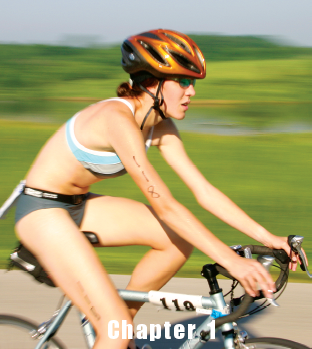

| 1.1 | Temper Enthusiasm |
A top triathlon coach once said to me — stealing from a saying about crashes in cycling — there are two types of distance runners: those who have had a running injury and those who will have a running injury.
There’s nothing more energizing for a runner than to look at a well-crafted training plan on which you are about to embark. It could be six weeks, 12 weeks, 24 weeks, or a year or multi-year plan. Common components include long runs, base mileage, threshold runs, track workouts, Fartlek, easy runs, weight training, stretching, and on and on. If it’s your first training plan, such a written plan can be particularly inspiring because you feel you’re looking at a launch into the world of high fitness. If you’re experienced, the excitement lies within chasing a new time goal, a new distance to be covered, or the goal of beating someone else. Regardless, it’s fun to pour through and imagine the future.
What you’ll never see in a training plan, whether you’ve drafted it from a book, torn it out of the pages of a magazine, or paid a coach to write it for you, are injuries that may well be lurking out in the future, tripping you at week three or week 10. Generally speaking, one of the prices you pay to be an athlete is that there are no guarantees against getting injured. Any athlete who thinks he or she can’t get hurt is probably the most likely to end up getting hurt.
Those new to running or triathlon have probably heard something about this, but the likely fact is that they didn’t register it nor really believe it. Over and over, it has to be learned the hard way. A friend of mine by the name of Marla was a perfect example. I was living in New York at the time and training for the Ironman Triathlon World Championship (in the following referred to as Hawaii Ironman) in 2000. Marla approached me about how to take up running and, as all runners are, I was happy to answer her questions and make suggestions on how she should start. Also, like most veteran runners (and coaches), I know that I’ll never have all the answers, and anyone who says they have all the answers should be avoided at all costs. Still, considering my experience and relative ability, Marla would have been smart to listen to me.
I’d told Marla that the key to successfully getting a running program off the ground was to start slow and with a low amount of mileage. For her, I figured two to three times a week at 20-30 minutes would be plenty. I suggested that it’d be best if she kept it to two runs a week and added some cross-training — biking would be perfect — once or twice a week. I said sticking with a simple program like that for 3-4 weeks would be a tremendous start; she had zero athletic background (she was in her mid-20s), and starting gently like this would give her bones, muscles, and tendons a chance to be exposed to the new stress and gradually adapt by getting stronger. If she followed a cautious schedule, she could lessen the chance of injury, and increase her progress. I also recommended buying a good pair of running shoes.
Marla went out for her first run and ran as far as she could as fast as she could. She wore retro Pumas because she was too excited to wait until she could make it to a running shoe store. She reported to me that night, blazing with enthusiasm about her new life as a runner. She was fine, she said, and knew that she could handle running every day. I listened to her and tried to emphasize that she needed to take a breath, listen to me and adhere to a patient, meditative schedule. I told her that enjoyment of the exercise could swiftly be taken away by overzealousness. I told her about how there are elite distance runners who log 140 miles a week and more, much of it at mind-boggling paces, but that it took each and every one of them years and years and years to train their bodies to handle such incredible volume. As a beginner with weak muscles, tendons, and ligaments, damage could strike like lightning.
I hung up the phone, knowing that she didn’t believe me. Sure enough, two days later, she called and told me about the shin splints she had, the aching Achilles tendon, the sore muscles. She couldn’t even try to run for another week, and I’m pretty sure she gave up completely, because I never heard from her again.
It left me thinking about what could have happened. If Marla had followed the sketch of the training plan I’d given to her, it’s far less likely she would have met with such discouraging results so soon. It would have been more likely that she would have tasted the satisfaction of the best part about being an endurance athlete: the satisfaction of a ritualistic discipline that leans toward conservative long-term goals rather than high-ledged short-term goals that are risky.
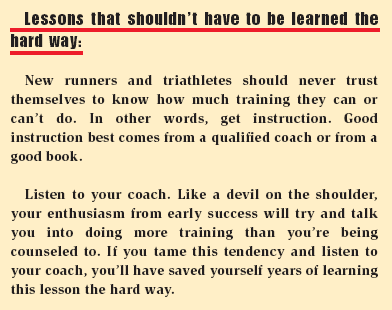
| 1.2 | Beware Feelings of Invincibility |
Last chapter, we talked about the more obvious and easy-to-understand pitfall that beginners fall into, that of being impatient at the beginning. It should be noted that a similar pitfall also hinders plenty of experienced athletes, for a different reason.
About 10 years ago, I was mid-way through a track season in which I was focusing on the 1500-meter run. I was coming off a breakthrough cross-country season, my first, and after spending the previous several years focusing on the marathon, through a lot of good training, I’d sprung free some 5k speed. That spring, I was making good progress going into distances I hadn’t run since around 1980, when I was in high school. I matched my best time as a high school 800-meter runner at the age of 30, and the season was just beginning to roll. My 1500-meter time went from 4:12 to 4:10 to 4:08, and on a warm day at the Fresno Relays, I ran 4:06. My coach said that my training was indicating I was prepared to run 4:00 flat.
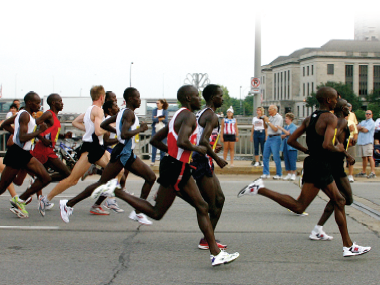
In the morning runs and throughout all the track workouts and distance runs on weekends, I’d begun to feel invincible. I followed my coach’s workout plans to the letter, thrashing myself with certain speed-endurance workouts that would have been unfathomable to me a year before. I felt incredibly strong. I began to make choices that reflected that: I switched from racing flats to track spikes for the track workouts. I pushed last miles in tempo runs up a little harder than they needed to be. I did my tempo workouts on the track instead of on the road or trail. I snuck in weight training workouts. I felt like I could digest it all, and that I’d just get stronger and stronger.
It was after I’d finished the 4:06 in Fresno that I first felt something stir the left hamstring. It was just a little bit tender as I jogged a warm down. I was scheduled to run an 800-meter leg in a distance medley that same afternoon. I jogged, tried stretching, and paid a visit to the first aid station for some ice.
I warmed up for the distance medley and still felt a slight twinge, but the feeling of invincibility had me convinced I could be run over by a truck and still race. As if it was all a matter of the mind.
The 400-meter runner passed me the baton, and I began my two-lap effort around the track. On the turns, I felt a grinding sensation in my hamstring. I ran a good split for me, right around 2 minutes flat, but as I walked off the track trying to get my breath, I knew that I’d shredded the leg.
The next day, my hamstring was so sore I could barely walk. I used ice on an almost hourly basis for the next couple of days. I saw a physical therapist for treatment. When I could handle it, I got a massage. But I wouldn’t be able to jog for about 10 days, and by the time I could actually run on it again, I was starting from square one to get back the fitness I’d lost.

Referring back to my twist on what matter of mind means, I’m suggesting that the flood of confidence that comes with making great progress in running is laced with booby traps. You work hard and the progress comes, and you get even more fired up than you were at the start.
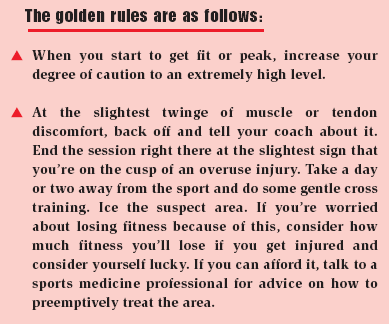
| 1.3 | Think Before You Drop |
For different reasons, the temptation to drop out dances through every endurance athlete’s brain at one point or another. Therein lies the reason we like the challenge of the endurance contest in the first place: to test our inner mettle. Sometimes dropping out is the smart thing to do; other times it carries with it the risk of psychological injury, a far more difficult problem to recover from than many physical injuries.
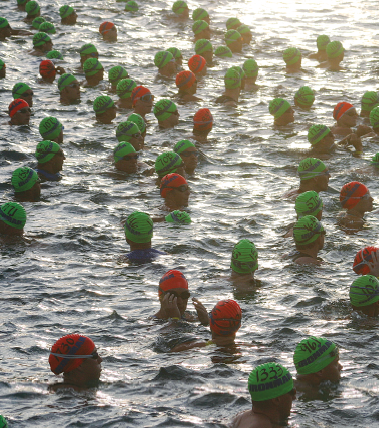
Do drop out from a race if injury pain is telling you that you’re doing damage. In particular, this applies to long-distance triathletes or ultra runners who are exposing themselves to a hot sun and humid conditions. Simply said, heat injury can leave you in a coma, and it can even kill you. If you aren’t too far gone, you can stop at an aid station, drink fluids, eat pretzels, and recover until you can walk/jog your way in, preferably after a doctor’s OK. But none of this is worth dying for, and you just don’t mess around with hyponatremia or heat stroke.
When it’s musculo-skeletal injury pain, like a smarting Achilles tendon or knee pain or the like, the best judgement call is to play it safe. Sometimes it’s just an odd little pain that is meaningless and evaporates on its own; other times it blossoms into a sharp twinge, cramp, or crack, and you won’t be able to keep running even if you want.
Don’t drop out from a race if you’re just not racing well and are feeling discouraged. Race to the end the best that you can. Carry this directive out with the notion that you’ll earn self-respect for finishing up even a bad day. You’ll get tougher, and you’ll have taken a step to preparing for the next race. You will have saved the day.
A good friend of mine, a fellow marathoner, trained hard and was one of the toughest runners I knew. But I recall clearly how one particularly nasty 10k, he dropped out at the half-way mark. He did it again at a marathon, and later it seemed like every race he ran he dropped out from. Endurance athletics is a tough business, and the faster you get, the more mental toughness you’ll need to get through the last quarter of any race, regardless of distance. Give in to mental weakness just once, and you’ll be running a huge deficit that will take a long and hard climb to erase.
Here’s the thing: If you succumb to the voice in your head telling you to quit just because it doesn’t feel good, then you will have made it extremely easy to drop out the next time. The flip side is that not dropping out from a race just because you feel off is as strong a habit as dropping out.
Just remember that even the greats have bad days. Bob Kempainen, a two-time Olympic marathoner and sub-2:10 marathoner, was running great until the final three months before the 1996 Olympics in Atlanta. Kempainen was adhering to a high-mileage training program, as anyone aspiring to medal in the marathon at the Olympics must, and fell victim to a mysterious lower back problem that was so bad he couldn’t even run in the pool. He was forced to take weeks off, and by the time Atlanta rolled around, he was just getting back into sync. He raced (you don’t skip the Olympics), but had run an extremely slow time for him, finishing well out of sight of any medal regardless of color. Afterward, he commented that the pain and effort it took to run a marathon when not completely fit far outweighs the pain of racing a much faster time when fit. But Kempainen finished. He knows that not finishing a race because of discomfort exacts a heavy price.
After you get across the finish line, take the pain with you and turn it into focus and energy to train well for the next one. Use it as psychic fuel to get to the starting line as highly prepared and healthy as possible, so that you can use all your powers to race up to your expectations.
Treat races with hot-blooded intent. Train so hard (but be careful of overtraining!) that it makes the race feel easy.
| 1.4 | Balance Self-Sufficience |
Distance running saved my butt. While I had dabbled in running in high school, and survived a half-Ironman at 21, I didn’t really get anything out of it until 1989, the year I first finished a marathon, the Big Sur Marathon. Before that, I’d failed in college, failed in the U.S. Army, and was generally flailing at anything I was trying to do at the time.
The reason Big Sur delivered some much-needed confidence and knowledge to my life was that I had followed a training plan to complete it. Rather than just hacking my way through it with a bare minimum of effort, I purchased Jeff Galloway’s Book of Running and followed his plan for completing a marathon targeted at a time of 3:20.
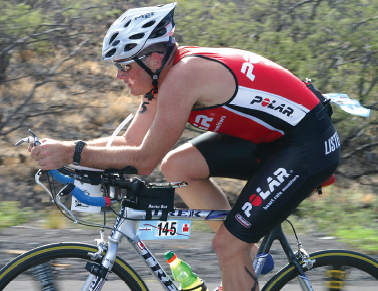
Lucky for me, I was following a plan that required a commitment of six months rather than six weeks, and what I learned within that time frame was the value of slowly and humbly plodding toward a goal. There was no way to achieve the goal by being slick, or lucky, or extra talented, or knowing the right people. It required doing the work. By doing the work, I equipped myself to tackle the problem of completing a race that — in my case — I truly didn’t know if I could do or not. I didn’t believe I could do it until I actually crossed the line.
I followed Galloway’s program and was fortunate enough at the time to live near a good running shoe store, Hoy’s Sports in San Francisco. There, I was sold a good, quality pair of technical running shoes. Buying a fresh pair of shoes became a small yet treasured moment, a symbol that I was doing the training and doing it on my own. I was learning the value of a methodical and patient work ethic, which is the one universal currency that the world of endurance athletics accepts.
The world of distance running is actually counter to the concept portrayed by Alan Sillitoe’s Loneliness of the Long Distance Runner. You might be alone when you go for a long run, but it doesn’t necessarily mean you’re lonely. Experienced runners get this. Having time to yourself on a training run is refreshing and addictive. Through this process of ritual and training, the endurance athlete builds a keen self-reliance built of self-motivation and a growing wariness about the way the rest of the world works.
To the veteran endurance athlete, the outer world beyond the quiet realm of self-reliance is a place frying itself with commercialism, quick-rich schemes, talking heads and incessant advertising. Through every channel of communication, it seems like someone’s trying to plug his sales pitch into your head. You retreat back to your training and your training logs, and the hunger for it grows. It’s the one place that seems real in our flash media world. You can feel your internal strength grow. Self-reliance deepens.
It’s a great thing, one just about every distance athlete who has put some time into it learns to draw energy from. Reciprocal to the growing strength is a mistrust of experts that you shouldn’t cut yourself off from, as many athletes have done over the ages. While skepticism is a good thing, there are going to be times in our athletic careers that we should seek advice and counsel from coaches, doctors, nutritionists and the like. At the elite level of triathlon, just about everyone is using the kind of team approach that cycling great Lance Armstrong uses. Armstrong finds the best minds he can in the realms of coaching, bike technology and restoration.
In other words, the by-product of self-reliance is an invaluable tool in not just becoming a good runner or triathlete, but in any pursuit. However, we must strive to avoid falling into the trap of thinking we have it all figured out.
This especially applies to preventing injuries and dealing with the trickier injuries. Sometimes ice and aspirin do the job, but injuries involving delicate structural imbalances, for example, usually need the experienced eye of a good sports medicine professional to ferret out the cause and repair the problem. There’s a heady pride attached to “running through” an injury, and sometimes this can be accomplished. Other times, it’s the back alley to disaster. One of the more phenomenal distance runners I’ve ever known is an ultra runner by the name of Gary Hilliard. I used to sell him shoes (he needed many) at Hoy’s Sports after I began working there. Gary logged gargantuan amounts of miles early in the morning and after he got off his shifts working as a steel worker. I ran with him once in the Golden Gate Headlands in Marin. Gary had run 12 miles to meet the group. Together, we ran 24 miles. Then Gary ran home, another 12, for a solid 48 miles. He did most of his running in the pre-dawn, before he went off to work. He also owned a treadmill so that he could get in extra miles when he watched TV.
His races of choice were six-day races, ultra events where the winner is the one who runs the most miles in a six-day period, usually around a track or one-mile loop. Gary averaged 112 miles a day in one such event that he won. Once, when he was in the store, I asked Gary about his approach to getting past injuries; surely someone of his rank and experience had some incredible techniques.
“I’m not the one to ask about healing injuries,” Gary said. “I ignore them.”
About a year later, a mutual friend told me that Gary had to give up his ultra running because he’d tried to run through a classic case of sciatica, otherwise known as lower back pain. Gary pushed himself through it, and the injury pushed back. Gary lost the battle and had to give up long distance for a matter of years.
Gary’s experience was the ultimate example of the sharpness of both sides of a double-edged sword.

| 1.5 | Nutrition Counts |
Train all you want, but without effective recovery and restoration, hard training doesn’t mean zip. It’s when you’re resting and eating well that your body responds to the training stimulus with improvement. Simply put, rest means getting enough sleep and managing the stresses of life efficiently. The other biggie in the restoration equation is nutrition.
Nutrition has become amazingly complicated. Mostly because of the reams of bad information being generated to sell me and you all sorts of expensive but useless things. There’s plenty of good, untainted information, as well. Nutritionists, such as Nancy Clark and Ellen Coleman, write great books that should be on every triathlete’s bookshelf.
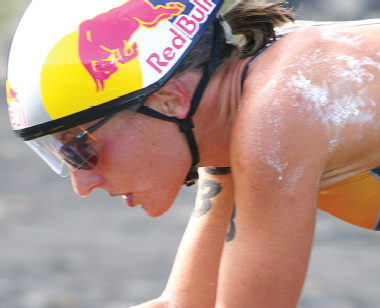
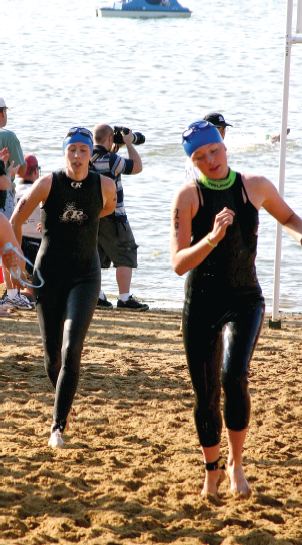
But the best way I’ve ever come across to really get why nutrition is so important is to experience it. Spend a week doing the following common sense things: eat a diet of whole grains, fish, fruits, vegetables and lean meats, devoid of processed foods, coffee and alcohol, and do that 100% for one or two weeks. The way you view the shelves of the grocery store, radically alters. Do that for a week or two, then go to the store, and all you see is bad food in bright packaging. Do that for a week or two, and you start feeling so good your daily cravings for sugar, salty, or fatty foods (or whatever turns you on) diminishes. It all starts looking gross.
What I recommend is a nutritional adventure to discover the simple truths involved in good nutrition. Commit yourself to one or two weeks, and you’ll learn a lot. Or at least, I learned a lot. Below is how I recorded my first full tilt foray into eating healthy stuff. I’m not saying that this is the sports nutrition diet a dietician would prescribe for you, I’m just sharing my discovery of the power of nutrition. It blew my mind.
People who have known me for a long time wouldn’t believe it. Right now, as I type these words, I have a cup of hot green tea steaming on my desk in a black mug while lunch is cooking in the kitchen. I have a piece of fresh salmon in the broiler, a pot of organic brown rice — spiced with dulse and garlic — simmering on the stove. For breakfast, I had organic oatmeal, two slices of brown rice bread and organic fruit. I’ve been sipping at cold, filtered water with a twist of organic lemon throughout the day. The dinner menu looks to be burritos with organic vegetables and black beans, more brown rice and fruit for dessert. Somewhere in the day I’ll cram organic celery, apples and oranges into a Krups juice extractor and have about 10 ounces worth of beverage bubbling with enzymes. In the evening, you’ll find me brewing chamomile tea. Everything I will have consumed through the course of the day will be either organic, free-range or filtered, depending on the kinship term. And, a true stunner for me, I’m hooked on my first step toward a more holistic approach to fitness and sports.
Let me now confess that for more than a decade my approach to athletics has been stuck solely in the singular dimension of aerobic exercise. At 39 years of age, I was eating the way I’d always eaten. That is to say, lunch was a sandwich and Coke, dinner was macaroni and cheese or pizza or a burger and side salad drenched in ranch, and breakfast would most likely take the form of a bagel and cream cheese and carton of orange juice.
The foundation of this breakfast was always a breathtakingly large cup of premium-grade coffee. A bucking-bronco blend of beans from Hawaii and South America, it bluntly transported a dose of caffeine that, before knocking me out with a crash, sent me on a tear at work. Sometimes I was effective and fast, sometimes I was hyper and scattered, and sometimes just tired to the bone for no obvious reason. At night, I’d fight to get to sleep — not exactly a good sign. In the morning, I’d wake up feeling wrecked. The antidote was always the first cup of coffee, and of course, a morning run.
There is a faction of thinking in the world of endurance athletics that insists diet is not extraordinarily relevant if you log enough workout mileage. In the words of running novelist John Parker Jr., “If the till is hot enough, anything will burn. Even Big Macs.”
This is a corner of sports nutrition theory that I, too, have not only lived by, but fought doggedly to protect. When you’re running high mileage training for a marathon, or logging upwards of 20 hours of weekly training in preparation for an Ironman, eating a doughnut feels like tossing a paper ball into an electrical fire. The body’s metabolism, whipped up into a greedy panic, is ravenous for calories and doesn’t seem to care if it’s fats or carbs or hotdogs or beets sliding into the gullet. Coffee, beer, Pringles, and other vices burn in the rage of glycogen’s flame.
Junk mileage cancels out the junk food. This was the equation I’ve fought to protect by not giving it much thought. Because if you look at it from any sort of scientific or common sense perch, it’s a teetering sight. “You are what you eat,” has more meaty common-sense credentials.
Over the past six months, I’ve been plagued with a knee problem, and my running mileage slipped considerably. I wasn’t getting my trusty antidote — no endorphins to wash out the complaints from my body. Still, buffalo wings were not off the menu. In other words, I was hearing but not listening.
I became aware that, except for caffeine-induced spells of energy, I felt tired and cranky. It wasn’t a good tired that comes at the end of a good, solid workday. Rather, it felt more like being sick.
After admitting to myself that my unhealthy diet was slowly pushing me off a cliff, I serendipitously met a friend of mine (a marathoner and Ironman triathlete) and his wife for dinner when visiting San Diego a couple of months ago. Matt was on the tail end of a one-week fast restricted to soups and juices. We talked about fasting, what it takes and what it delivers, and it was then that my body began desperately tapping me on the shoulder with the message, “You should do that!”
Upon my return to San Francisco, I discussed the idea of fasting for detoxification purposes with my girlfriend, who, while sharing my addiction to coffee, was far more tuned in to a good diet than I’ve ever been. She liked the idea too, probably due to alarm at my “food” choices while watching World Series games together.
We decided to hunt down an appropriate book on the subject. We picked the book, Toxic Relief: Restore Health and Energy Through Fasting and Detoxification, by Don Colbert, M.D. I found the idea of fasting intriguing, and I wanted the why and what-for explained to me in a doctor-like fashion.
That’s exactly what the book gives. Spiritual aspects of fasting are left mostly for the last two chapters — from a Christian point of view — for those interested. But the first 10 chapters are focused on how to fast safely and effectively to clean out your system and introduce your body to a whole new nutritional approach.
In the first three chapters, Dr. Colbert lays down a referenced overview of the average American’s intake of toxic chemicals from air and water pollution and from food — all compounded by the well-documented trend toward obesity. It’s pretty terrible stuff.
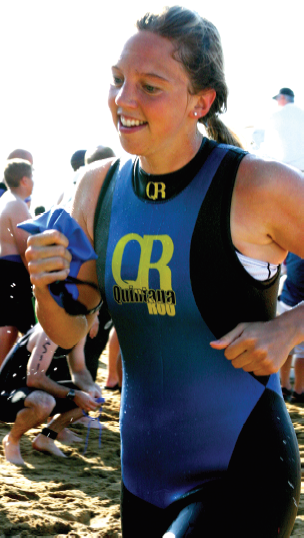
Here are a few of the highlights of contamination revealed to me: lead in our bones; DDT in our fatty tissues; and 1,672,127,735 pounds of chemicals (heavy metals within the mix) released into the atmosphere in the United States in 1993. In fact, when we take in a breath of air, along with carbon monoxide and smog from autos and industry, we may be taking in a good helping of benzene, formaldehyde, vinyl chloride, toluene, carbon tetrachloride and other “volatile organic compounds,” many of which can cause cancer.
Then there are pesticides — 1.2 billion pounds of which are sprayed onto our crops every year, as well as used in animal feeds for livestock.
If that’s not enough, there are nitrates and chlorine in our drinking water, preservatives and bleaching agents in our food, hormone-fed meat, PCBs in fresh-water fish, and mercury, lead, cadmium, and arsenic — all non-soluble and toxic — everywhere, including the tissues of our bodies. No long run is ever going to burn these off!
There’s even a condition called “Sick Building Syndrome” in which occupants of a building experience acute health effects that seem to be linked to time spent in a building, but no specific illness or cause can be identified.
And then there are folks like me, who consider French fries a serving from the fruit and vegetable group and beer a good source of vitamins.
“We may actually be starving from a nutritional standpoint while at the same time becoming grossly obese,” Dr. Colbert writes. “As a result of our overindulgences we have an epidemic of heart disease, arteriosclerosis, hypertension, diabetes, cancer, allergies, obesity, arthritis, osteoporosis and a host of other painful and debilitating degenerative diseases.”
The final problem, notes Colbert, is that someone who is wolfing down large amounts of “dead,” nutrition-less food will continue receiving pulsed messages from the brain that the body’s undernourished. Our hero then loosens up his belt another notch and raids the pantry for barbecue potato chips.
Reading about the detox process, the discipline required, and the benefits involved hooked me through the center. I was in.
With the objective being a spring-cleaning-like detoxification and investment in good health, Dr. Colbert’s program is not just a matter of diving into a fast for a few days. Rather, he instructs readers to practice two weeks of a “liver-cleansing” diet in order to prepare for the fast. Our football-sized livers spend 24 hours a day filtering our blood, about two quarts worth per minute. The goal during this period is to decrease the flow of toxins in the diet and load up the body — in particular the liver — with nutrients and vitamins that support this work.
I scribbled into a notebook my initial shopping list of pesticide-free organics: cabbage, cauliflower, broccoli, mustard greens, turnips, beets, carrots, brown rice, wild rice, brown rice bread, brown rice crackers, extra virgin olive oil, oatmeal, avocado, salmon, free-range chicken, green tea, and a collection of various fruits. I bought garlic and dulse (a salt alternative made from seaweed).
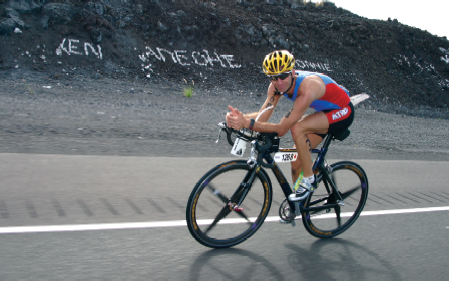
I picked up a water filter and a juicer from the hardware store. From a health food store, I bought a range of herbal teas and vitamin supplements that Dr. Colbert recommends — a strong multi vitamin, herbal supplements, minerals to include manganese and zinc, and antioxidants, such as vitamins C and E.
The bags of organic groceries and supplements would be displacing the foods that made up a good portion of my soon-to-be-former diet. Dr. Colbert provides a list of foods to avoid. Now banned from my table for the next four weeks were processed foods, fried foods, hormone-boosted fowl and meat, fish from fish farms, alcohol, dairy products, wheat and corn products, colas, chocolate, cheese, and, the scary part, coffee.
I started my first day with a cup of green tea instead of my old friend, a high-pitched coffee buzz. Green tea’s value as an anti-oxidant, according to Dr. Colbert, is that it’s 200 times more powerful than vitamin E and 500 times more potent than vitamin C.
“Green Tea is believed to block the effect of cancer-causing chemicals,” he writes, adding that it gooses cancer-blocking enzymes into action.
That said, it was (at first) a sad replacement for a cup of fresh-ground brew. This day turned into an experiment in mental drowsiness. In the days to come, I would also encounter grogginess and morning headaches. However, after my first breakfast — whole-grain oatmeal with apple slices, red grapes and pecans; two slices of brown rice toast; and a glass of water to wash down prescribed vitamins and supplements — I sensed a deep rush stirring from within, almost a giddiness. In spite of the caffeine-shortage shock, I felt good.
For lunch, I had brown rice and vegetables, an apple, a pear and more water. For dinner, I lightly sauted vegetables to go along with broiled free-range chicken breast, fruit for dessert and a cup of mandarin orange herbal tea. Just prior to hitting the sack, I had a cup of chamomile tea. Before I dropped off into the deepest sleep I could ever remember, I wrote in my notebook, “Today was the most nutritious day I’ve ever logged on planet Earth.”
I continued to eat the same way for the entire “liver-cleansing” phase. It took me eight days to finally break free from the hangover left by quitting coffee. But, when I was free of it, I wanted to throw a party for myself. It was as if I was one of the star travelers in the movie Alien who had successfully expunged the space monster using me as a host. I was no longer hanging on for life from cup-to-cup like (to use another John L. Parker quote) “a crazed marsupial in a flash flood.”
In effect, I was sleeping better and my energy was strong early in the day — and even stayed that way. No more ill-fated bungee jumps at high noon. The grogginess now a fading memory, my senses were sharper and my thinking more calm and clear.
I also began dropping pounds. Since my knee injury had plagued my training, I’d gained about 20 that I surely didn’t want. By the time I was ready to start the next phase, a three-day juice fast, I’d lost six of them — without any sort of starving or deprivation.
And the biggest surprise of all: I was starting to enjoy green tea. Weird!
My girlfriend had also performed the first phase of the detox program. In person and over the phone, we’d compare notes. We were getting similar results in every department, as she, too, had left coffee behind. We took a three-day weekend to embark on the juice fast, the core ingredient in Dr. Colbert’s plan to wash the body free of poisons and nasty chemicals.
Fasting, of course, is largely acquainted with spiritual and religious disciplines, from Christianity to Buddhism to Huichol Shamanism. But our project was geared for the health benefits advertised in the book. After a detailed and alarming discussion of toxins and their connection to degenerative diseases and other health problems, Dr. Colbert suggests part of the answer can be properly executed fasting.
“Fasting is a powerful, natural way to cleanse your body from the burden of excess toxic nutrients, such as bad fats, and from all other chemicals and toxins that cause degenerative diseases...It is the safest and best way to heal the body from degenerative diseases caused by being overfed with the wrong nutrition.” He goes on to detail a long list of additional benefits.
Later in the chapter, he lays out his argument that, for most, a juice fast is the best way to go rather than a water-only fast. He believes that juice fasting is more beneficial because it supports the liver, breathes fresh life into the system with vitamins, phytonutrients, minerals and antioxidants, and is less stressful on the body. Like a water fast, a juice fast also gives the digestive system a huge vacation from the normal grind, allowing it time to do some deep cleaning.
Per his instructions, we planned for and began a three-day juice fast, which would be followed by a four-day breaking of the fast.
It was another illuminating journey. Using recipes from Dr. Colbert’s book, like “Breakfast Drink One” (a cocktail made from juiced berries, oranges and a lime) or “Lunch Juice Five” (made from dandelion greens, celery stalks and carrots), we marched our way through the fast in kind of a happy daze. We were both surprised that we never struggled with hunger pains and noticed how the acuteness of our sense of smell went off the charts.
Throughout the day, we could drink specific teas and filtered water. In the evening, again following the instructions, we used the juicer to make soups, which we warmed on the stove. The three days passed quite smoothly, almost dreamily so. One morning, we both woke up with a metallic taste in our mouths, which we assumed might be a result of the body expelling toxins.
Then it was on to the post-fast phase — a four-day reintroduction to chewing and digesting food. On day one, we were only allowed raw fruits, like berries, apples and watermelon. On day two, we could add a simple soup at lunch and a dinner made of freshly chopped vegetables and water. By the end of the phase, we could even add a small portion of free-range chicken or meat. At this point, we were to spend the next two weeks back on the liver-cleansing diet. The mission would then be complete.
In the end, I lost more than 10 pounds. I no longer wake up looking puffy and swollen. More importantly, I feel better than I can ever remember feeling — my best evidence that I achieved a measure of toxic flush. I have more energy, a much improved sense of being, and (although I admit I’m not sure what the correlation is) I’ve shed a general muscular stiffness that I thought I’d been stuck with because of lots of miles and marathons. Whatever, it’s gone.
I’m also pleased to report that I now eat like this all the time, save for an occasional beer or pizza. But instead of craving junk food, I’m craving all the good stuff I’ve been introduced to.
Quite a blanket endorsement for a holistically oriented nutrition overhaul, I know. But if you share any of my history with bad food, hot coffee and cold beer, I highly recommend either taking a look at Dr. Colbert’s book, or bringing it up with a good nutrition and wellness counselor and putting together an appropriate program of your own. I guarantee it’s a good buzz.